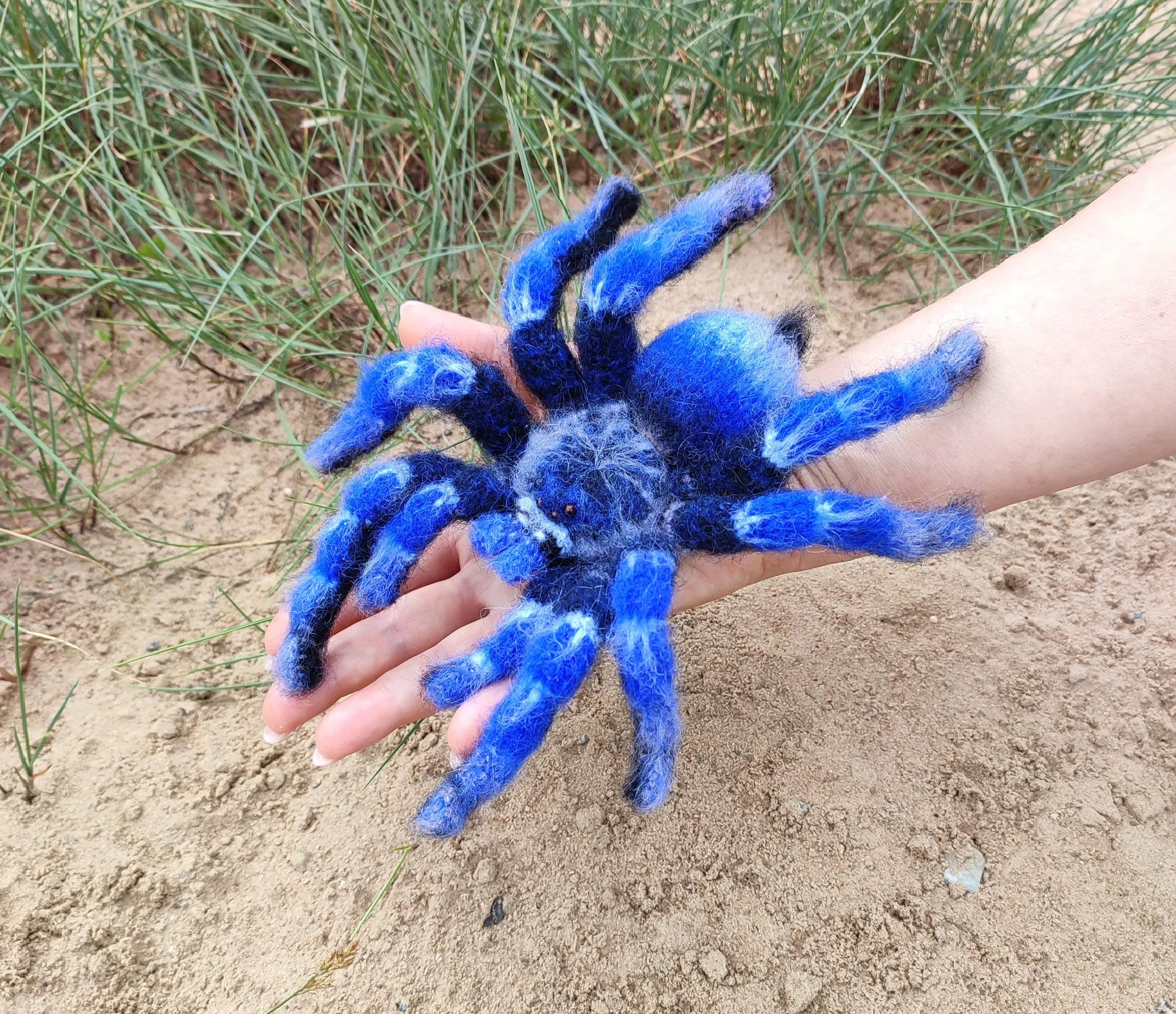What is a Bird Eating Spider Tarantula?
The Bird Eating Spider Tarantula, scientifically known as Theraphosa blondi, is one of the largest spider species in the world. Despite its name, these massive arachnids rarely consume birds. Their diet primarily consists of insects, but they are opportunistic predators and will occasionally feed on small vertebrates. Native to the rainforests of northern South America, these spiders are a fascinating example of adaptation and survival in a complex ecosystem. Their imposing size, coupled with their unique characteristics, makes them a captivating subject for both scientific study and public fascination. Understanding their place in the natural world provides insight into the intricate web of life and the importance of preserving biodiversity.
Origin and Habitat
Bird Eating Spider Tarantulas are endemic to the rainforests of northern South America. They are primarily found in countries such as Brazil, Venezuela, Guyana, Suriname, and French Guiana. Their preferred habitat consists of humid, tropical environments with high rainfall and dense vegetation. These spiders are typically terrestrial, living in burrows or under rocks, logs, and leaf litter on the forest floor. The specific microclimates within their habitats, including temperature and humidity levels, are crucial for their survival. The destruction of their natural habitat through deforestation and habitat loss poses a significant threat to their long-term survival. Conservation efforts are essential to protect these unique creatures and their vital role in the ecosystem.
Appearance and Characteristics
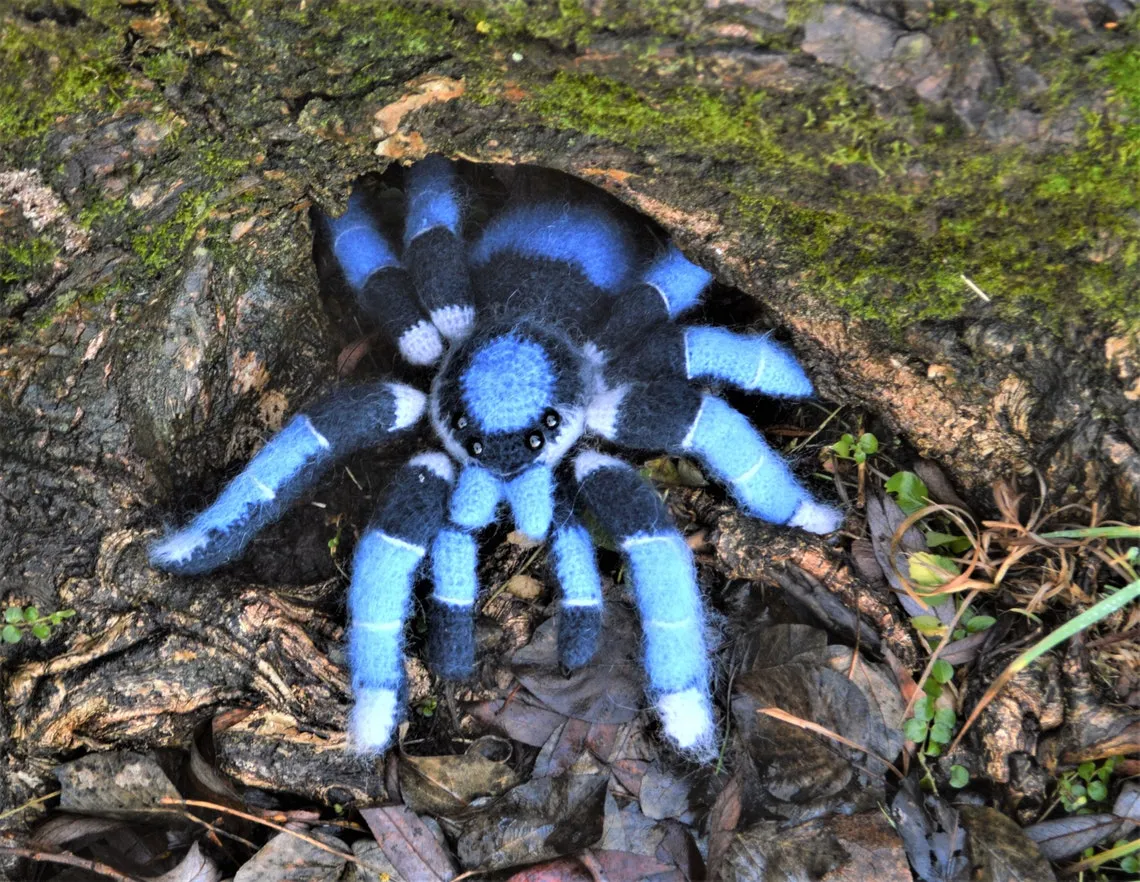
The Bird Eating Spider Tarantula is a striking creature, distinguished by its large size and robust build. Their bodies are covered in dense setae, or hairs, that can range in color from dark brown to a reddish hue, providing excellent camouflage within their natural surroundings. These hairs serve multiple functions, including sensory perception and defense. They possess eight legs, two pedipalps (used for sensing and manipulating prey), and two chelicerae (fangs) capable of delivering a potent venom. The overall appearance of these spiders is intimidating, yet they are captivating in their unique adaptations and characteristics. The ability to blend seamlessly into their environment is a testament to their evolutionary success. The physical features of these tarantulas are a marvel of nature.
Size and Physical Features
As one of the largest spider species, the Bird Eating Spider Tarantula boasts an impressive size. Their leg span can reach up to 12 inches (30 cm) or more, making them truly remarkable to behold. Their bodies themselves can measure up to 4.7 inches (12 cm) long. Females tend to be larger than males. Their robust bodies and powerful legs enable them to move with surprising agility, whether they are stalking prey or evading predators. The sheer size and weight of these arachnids contribute to their dominating presence in the ecosystem. The combination of size and physical attributes is a marvel of nature. This size makes them a formidable predator in their natural habitat.
Diet and Feeding Habits
Despite their name, Bird Eating Spider Tarantulas rarely consume birds. Their diet mainly consists of insects, but they are opportunistic hunters and will eat anything they can overpower. Crickets, beetles, and other invertebrates make up the bulk of their meals in the wild. They have been known to consume small vertebrates such as lizards, rodents, and occasionally, small birds, if the opportunity arises. These spiders typically ambush their prey, injecting venom through their fangs to immobilize it. They then use digestive enzymes to break down the prey’s tissues, which they subsequently suck up. Their powerful jaws and digestive capabilities are essential for their survival. Their feeding habits are a key aspect of their ecological role.
What do they eat
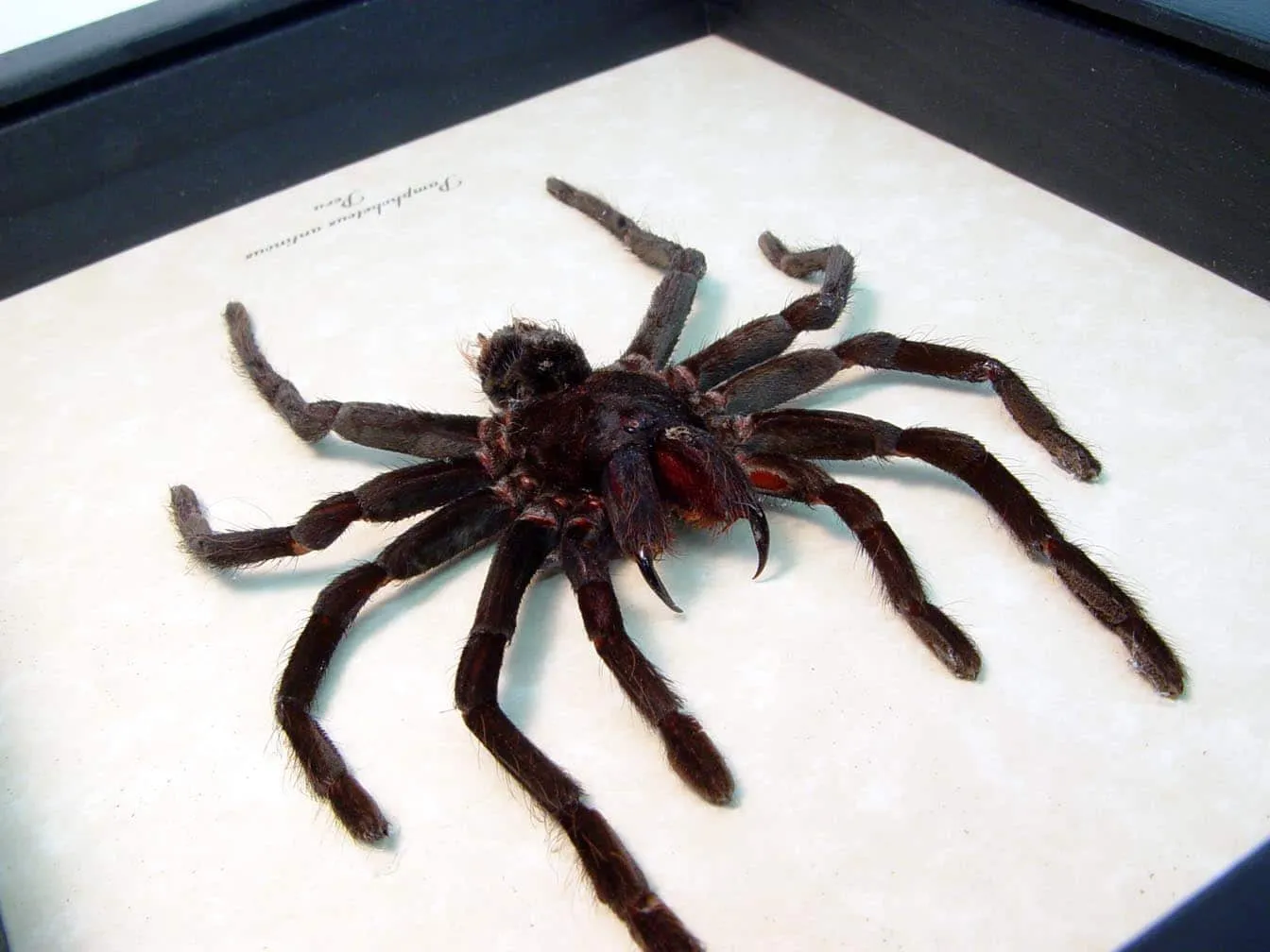
As mentioned previously, the primary diet of the Bird Eating Spider Tarantula consists of insects and other invertebrates. Crickets, mealworms, cockroaches, and various types of beetles are frequently consumed. They are opportunistic and will also eat small vertebrates. In captivity, a varied diet is essential for optimal health and growth. This can include pre-killed insects, ensuring that the tarantula is safe from potential injury. The specific nutritional needs of these spiders should be considered when choosing what to feed them.
Hunting Strategies
These tarantulas are ambush predators. They wait patiently in their burrows or beneath cover, relying on their senses to detect approaching prey. They have sensitive hairs on their legs and body that can sense vibrations in the ground or air, alerting them to the presence of potential meals. Once prey is within striking distance, the tarantula launches a swift attack. They inject venom through their fangs to paralyze the prey and begin the digestion process. Their hunting strategies are crucial for their survival in the wild, providing an effective method of capturing a diverse range of food sources.
Behavioral Traits
Bird Eating Spider Tarantulas exhibit a range of interesting behavioral traits. They are generally nocturnal, being most active during the night when they hunt for food. They are not typically aggressive towards humans, but will defend themselves if threatened. They often retreat into their burrows or release urticating hairs as a defense mechanism. In captivity, they can become accustomed to their keepers, and may even show signs of curiosity. Their solitary nature means they spend most of their lives alone, except during mating season. Understanding these behavioral traits is essential for providing appropriate care and appreciation for these remarkable arachnids.
Defensive Mechanisms
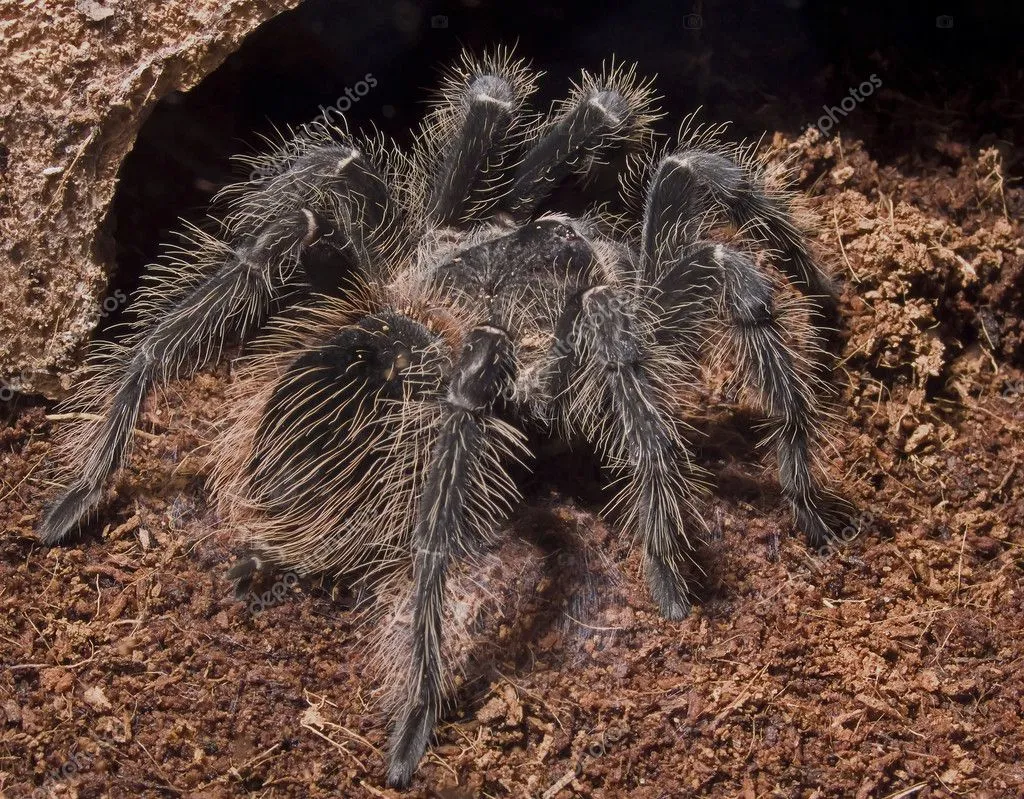
The Bird Eating Spider Tarantula has evolved several defensive mechanisms to protect itself from predators. One of the primary defenses is the release of urticating hairs. These are barbed hairs located on the abdomen that the spider flicks off to deter potential threats. Contact with these hairs can cause skin irritation and discomfort in humans and other animals. The spiders also have strong fangs and can deliver a venomous bite, though the venom is typically not life-threatening to humans. They will also retreat to their burrow if they feel threatened. Understanding these defensive mechanisms helps appreciate their survival strategies.
Molting Process
Like all tarantulas, the Bird Eating Spider Tarantula molts periodically. This involves shedding its exoskeleton to allow for growth. The process begins with the formation of a new, soft exoskeleton beneath the old one. The spider then lies on its back, and the old exoskeleton splits open, allowing the spider to emerge. During molting, the spider is particularly vulnerable, as its new exoskeleton is soft and fragile. It is crucial to avoid disturbing a molting tarantula. The molting process is a fascinating display of nature’s ability to renew and adapt. After molting, the tarantula will be larger and its coloration may be more vibrant.
Lifespan and Reproduction
The Bird Eating Spider Tarantula has a relatively long lifespan. Females can live for up to 15-25 years in captivity, while males typically live for a shorter period, around 3-5 years. Reproduction involves the male spider creating a sperm web and transferring sperm to the female. After mating, the female will lay eggs in a silken egg sac, which she guards carefully. The incubation period can vary, and the spiderlings, or spiderlings, will eventually hatch. Their lifespan is a significant factor in their care and conservation. Understanding their reproductive cycle is crucial for successful breeding programs.
Reproduction and Mating Rituals
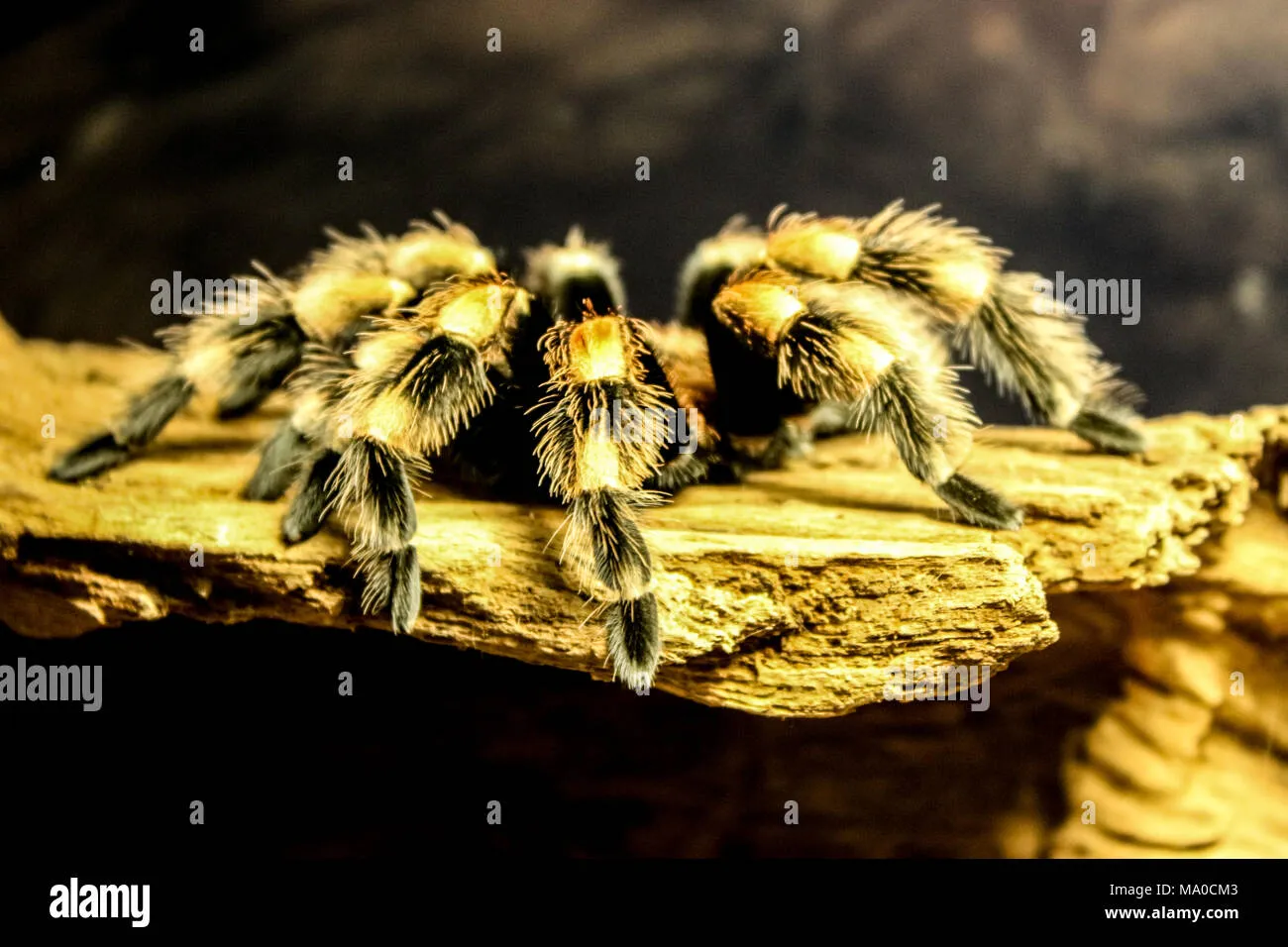
Mating is a complex process for Bird Eating Spider Tarantulas. The male spider must approach the female carefully, often using courtship rituals to avoid being mistaken as prey. He uses special hooks on his legs to secure the female’s fangs and deposits sperm into her spermatheca. The female then lays her eggs and encloses them in a silken egg sac. The incubation period varies, but the female will guard the egg sac vigilantly. After the spiderlings hatch, they will go through several molts before becoming fully grown adults. This process represents a delicate balance between survival and the continuation of the species.
Conservation Status and Threats
The Bird Eating Spider Tarantula faces several threats to its survival. Deforestation and habitat loss are major concerns. The destruction of their natural environment has a direct impact on their populations. The pet trade also poses a threat, as demand for these spiders can lead to overcollection from the wild. They are not currently listed as endangered, but their conservation status requires monitoring and protection. Conservation efforts are crucial to ensure that future generations can appreciate these remarkable creatures. Measures should include habitat protection, sustainable pet trade practices, and raising public awareness.
Common Misconceptions
There are several common misconceptions surrounding the Bird Eating Spider Tarantula. Perhaps the most prevalent is the idea that they frequently eat birds. While their name suggests this, they rarely consume birds. The venom of these tarantulas is often wrongly believed to be highly dangerous to humans. Their bite is unpleasant, but not typically life-threatening. Another misconception is that they are highly aggressive. In reality, they are generally shy and prefer to avoid confrontation. Correcting these misunderstandings is essential to promoting a balanced understanding of these creatures and their role in the ecosystem.
Bird Eating Spider Tarantulas as Pets
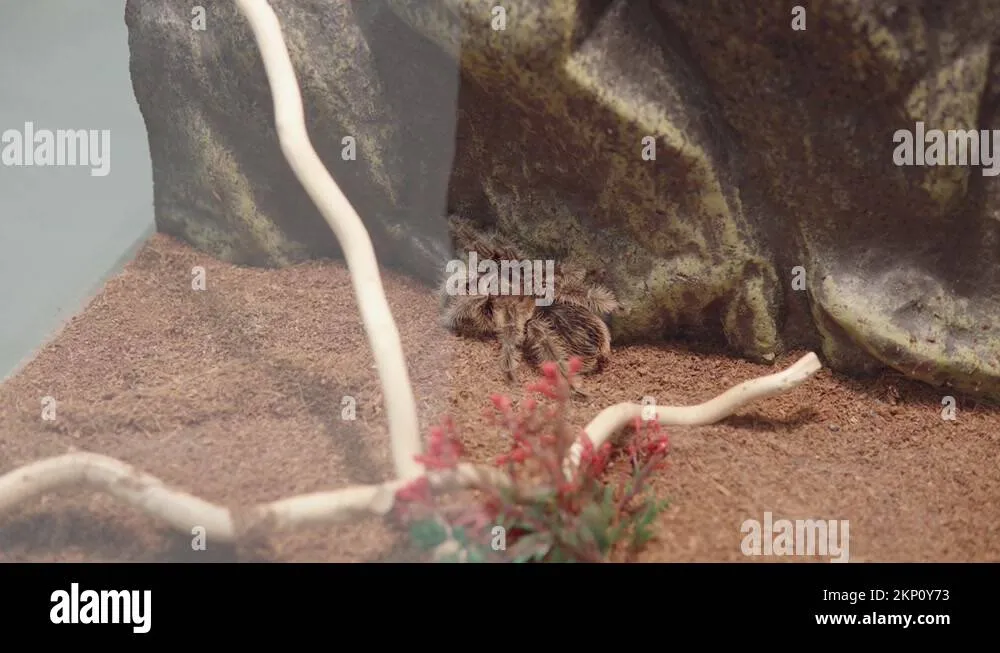
Bird Eating Spider Tarantulas can be kept as pets, but require specialized care. They need a large enclosure with appropriate substrate, temperature, and humidity levels. They require a consistent diet of insects and a source of fresh water. They are not generally recommended for beginners, due to their size and specific needs. Handling should be minimized, as they can be easily stressed and may release urticating hairs. These tarantulas are fascinating pets, but they also demand significant responsibility and understanding. Their care requires a commitment to provide for their wellbeing and appreciate their unique characteristics.
Caring for a Bird Eating Spider Tarantula
Caring for a Bird Eating Spider Tarantula involves providing a suitable environment and a proper diet. A large enclosure with a depth of at least 12 inches is essential. The substrate should be a mix of peat moss, coconut fiber, and vermiculite to maintain humidity. The temperature should be kept between 75-85°F (24-29°C) with a humidity level of 75-85%. A shallow water dish is a must, along with hiding places. The diet should consist of crickets, mealworms, and other insects, fed regularly. Handling should be kept to a minimum to reduce stress. Providing optimal care helps these amazing creatures thrive in captivity.
Health and Safety Tips
When keeping a Bird Eating Spider Tarantula, it’s important to prioritize health and safety. Always wash your hands thoroughly before and after handling the enclosure or the spider itself. Avoid direct contact with urticating hairs by minimizing handling and using long tools for maintenance. Keep the enclosure secure, as they can be surprisingly adept at escaping. If you are bitten, clean the area with soap and water and monitor for signs of infection. It’s always important to be aware of your limits and research if you have any allergic reaction. Proper handling and maintenance of the tarantula’s environment ensure a safe and enjoyable experience for both the keeper and the spider.
